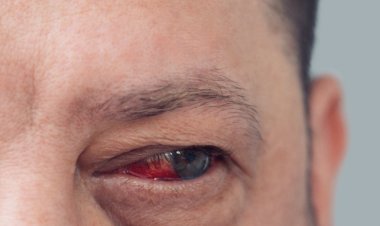IIT Hyderabad Researchers Develop Essential Oils based Drug Delivery Systems to treat Fungal Infections

Indian Institute of Technology Hyderabad Researchers have developed an essential-oil-based drug delivery systems to treat fungal infections without running the risk of inducing drug resistance. This medication can even counter fungi that have developed resistance to conventional antifungal drugs.
Microorganisms such as bacteria and fungi have a remarkable capacity to evolve resistance to antimicrobial agents used to destroy them.
The research was led by Dr. Mudrika Khandelwal, Associate Professor, Department of Materials Science and Metallurgical Engineering, IIT Hyderabad, and supported with funds by the Science and Engineering Research Board, Department of Science and Technology (DST), Government of India, and Corporate Social Responsibility (CSR) Grants from the American multinational conglomerate AT&T.
The Research Paper, co-authored with her Ph.D. Student Ms. ShivakalyaniAdepu, was published in the international peer-reviewed journal Materialia.
With the results of this work, the researchers are developing prototype antifungal hygiene products with the financial support from the Biotechnology Industry Research Assistance Council (BIRAC), set up by the Department of Biotechnology (DBT), Government of India, as an Interface Agency to strengthen and empower emerging Biotech enterprises.
Highlighting the need for developing alternate, non-resistance inducing treatment options for fungal diseases, Dr. Mudrika Khandelwal, Associate Professor, Department of Materials Science and Metallurgical Engineering, IIT Hyderabad, said,“Given the prevalence of fungal infections such as vaginal infections, diaper rash, athlete’s foot, and nail fungus, caused by the Candida family of fungi, drug resistance can become life-threatening.”
The IIT Hyderabad team turned to natural products to solve this problem. The idea of using carriers for controlled release of drugs has been around and various types of carriers including polymeric microcapsules, nanoemulsions/colloids and hydrogels have been developed for various drugs.
Elaborating on this research, Ms. ShivakalyaniAdepu, Ph.D. Student, Department of Materials Science And Metallurgical Engineering, IIT Hyderabad, said, “Herbal essential oils and their ingredients are a promising class of effective antimicrobials Thymol found in oregano oils, carvacrol found in thyme and eugenol found in clove oil, have excellent antimicrobial action against all types of Candida fungi. The problem with essential oils and their components is that they are sensitive to temperature, light, and pH, and decompose easily.”
A way to overcome this problem is to design a suitable carrier system that can protect the oils/active principles from these factors, and yet, release them in a controlled manner so that the antifungal action can be fully harnessed.
“Currently we are developing antifungal panty liners for mitigating vaginal candidiasis. The developed formulation can also be used as a transdermal patch /mucoadhesive patch to treat skin and mucocutaneous infections without inducing resistance in the fungal species,”added Dr. Khandelwal.
The IIT Hyderabad team chose polylactic acid microcapsules to encapsulate the essential oil ingredients. Polylactic acid polymers are biocompatible and biodegradable and are already widely used in the medical field. The researchers found that using the microcapsules alone as the carrier could cause uncontrolled, burst release of the ingredients.
To delay the release of the active principles, the researches designed another level of protection. The polylactic acid microcapsules that contained the active substances were further incorporated into a secondary barrier made of nanofibrous bacterial cellulose. In addition to designing the double-barrier carrier system, the researchers also enhanced the anti-fungal activity of their formulation by using synergistic mixtures of thymol, carvacrol, and eugenol.
The researchers compared their double-barrier, triple-ingredient formulation with simple colloids of the ingredients and found that the latter suffered from a far more rapid decrease in activity compared to their design. Furthermore, their controlled-release design achieved 99.9% fungistatic action within 12 hours, with only half the concentration of thymol, carvacrol, and eugenol as the colloidal samples, thus enabling small dosages for treatment.
About IIT Hyderabad
Indian Institute of Technology Hyderabad (IITH) is one of the six new Indian Institutes of Technology established by the Government of India in 2008. In a short span of less than 10 years, the institute built on an imposing 570-acre campus and has been ranked among the top ten institutes for four consecutive years in the National Institute Ranking Framework (NIRF)released by the Ministry of Human Resource Development (MHRD), Government of India. The Institute was also ranked #10 in the first edition of Atal Ranking of Institutions on Innovation Achievements(ARIIA) introduced this year by MHRD to systematically rank all major higher educational institutions and universities in India on indicators related to ‘Innovation and Entrepreneurship Development’ among students and faculties.
IIT Hyderabad has close to 210 full-time faculty, 2,855 students of whom 20 per cent are women, nearly 200 state-of-the-art laboratories and five research and entrepreneurship centers. The Institute has a strong research focus with more than Rs. 500 crore of sanctioned research funding while Ph.D. scholars account for about 30 per cent of total student strength. IITH students and faculty are at the forefront of innovation with more than 1,500 research publications and patent disclosures, 300 sponsored/consultancy projects and 50 industry collaborations. IITH has MoUs with 50 universities in the U.S., Japan, Australia, Taiwan and Europe. IITH has been pioneering change in pedagogy with fractal academic programs that atomizes course modules, encourage interdisciplinary learning spanning innovative technology, fundamental science, liberal arts and creative arts like photography, theatre and painting.

 Disclaimer: Welthi.com does not guarantee any specific results as a result of the procedures mentioned here, and the results may vary from person to person.
Disclaimer: Welthi.com does not guarantee any specific results as a result of the procedures mentioned here, and the results may vary from person to person.









